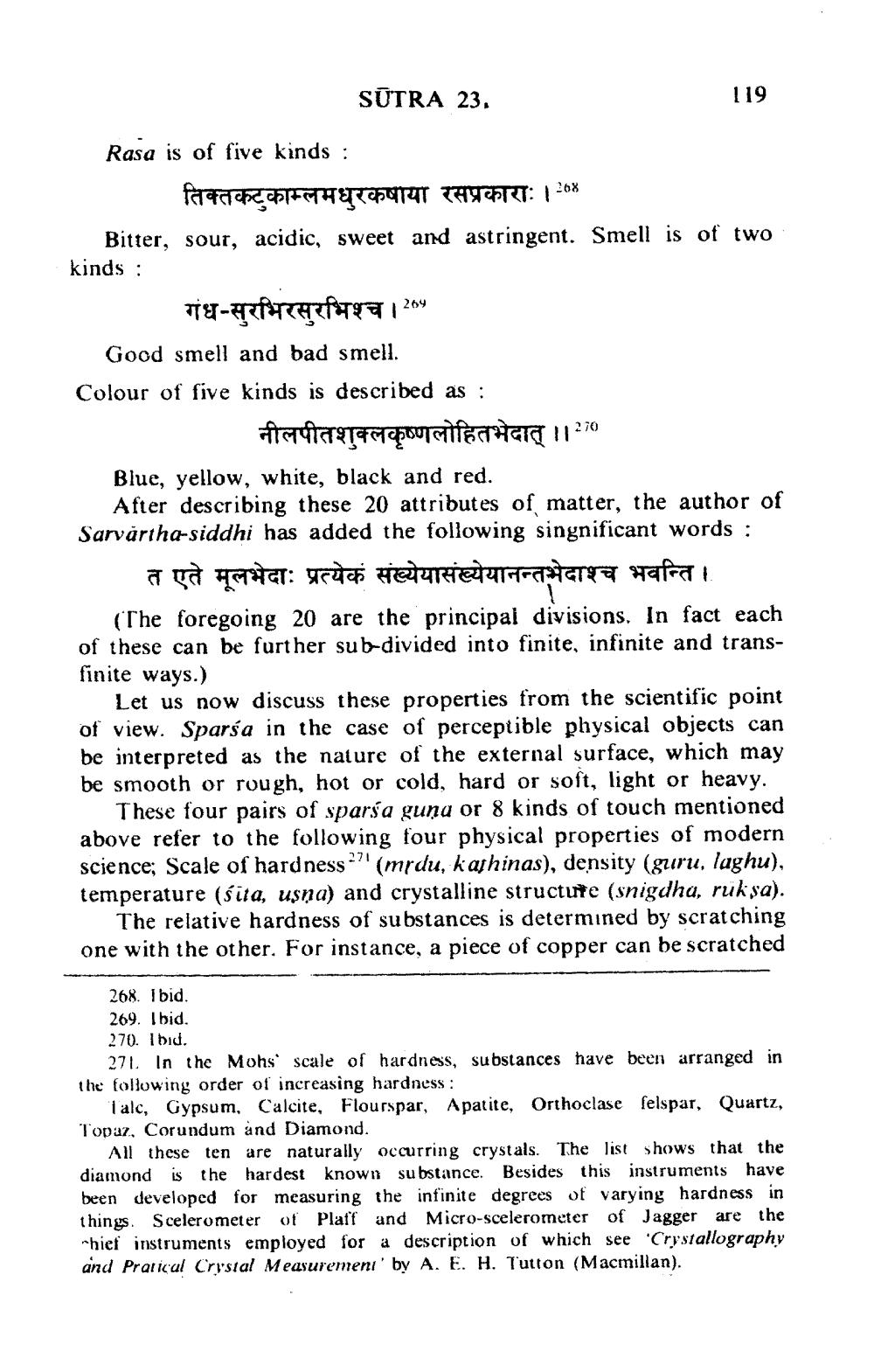________________
SUTRA 23,
119 Rasa is of five kinds :
तिक्तकटुकाम्लमधुरकषाया रसप्रकाराः । 268 Bitter, sour, acidic, sweet and astringent. Smell is of two kinds :
119-gefchef271209 Good smell and bad smell. Colour of five kinds is described as :
friegateur MIETITTO 11270 Blue, yellow, white, black and red.
After describing these 20 attributes of matter, the author of Sarvartha-siddhi has added the following singnificant words :
त एते मूलभेदाः प्रत्येकं संख्येयासंख्येयानन्तभेदाश्च भवन्ति । (The foregoing 20 are the principal divisions. In fact each of these can be further sub-divided into finite, infinite and transfinite ways.)
Let us now discuss these properties from the scientific point of view. Sparsa in the case of perceptible physical objects can be interpreted as the nature of the external surface, which may be smooth or rough, hot or cold, hard or soft, light or heavy.
These four pairs of sparsa guņa or 8 kinds of touch mentioned above refer to the following four physical properties of modern science; Scale of hardness? (mrdu, kashinas), density (guru, laghu), temperature (sita, usna) and crystalline structute (snigdha, ruksa).
e relative hardness of substances is determined by scratching one with the other. For instance, a piece of copper can be scratched
268. Ibid. 269. Ibid. 270. Ibid.
271 In the Mohs' scale of hardness, substances have been arranged in the following order of increasing hardness:
Talc, Gypsum, Calcite, Flourspar, Apatite, Orthoclase felspar, Quartz, Topaz, Corundum and Diamond.
All these ten are naturally occurring crystals. The list shows that the diamond is the hardest known substance. Besides this instruments have been developed for measuring the infinite degrees of varying hardness in things. Scelerometer of Plaff and Micro-scelerometer of Jagger are the rhief instruments employed for a description of which see 'Crystallography and Pratical Crystal Measuremeni' by A. E. H. Tutton (Macmillan).




